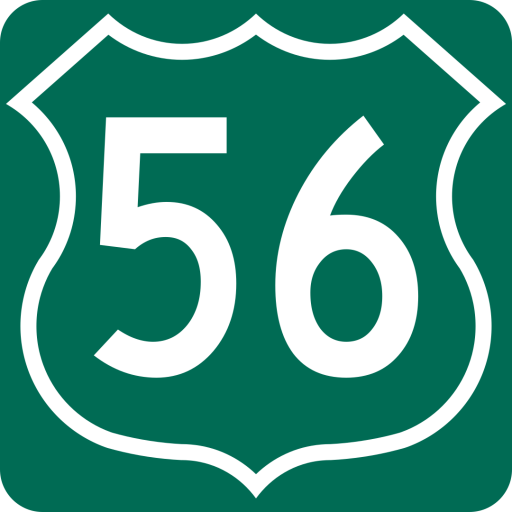About This Site
This site’s purpose is to explore the past, present, and future of the Kansas state highway system. This site started out in the fall of 1997 and has been constantly evolving since.
Information Given in the Route Tables
This section here explains the info that is given about each route in the route tables. Here is the standard data set:
- Length: Given to the nearest .001 miles as computed from publicly available KDOT sources.
- Endpoints: The endpoints of the route in Kansas. The first endpoint is the “beginning” of the route as defined by KDOT, generally the western or southern endpoint. If the road continues as a state-maintained highway into an adjoining state, a link to the highway entry at the appropriate site(s) will be provided.
- Counties: Counties the highway passes through. If a roadway straddles a county line, KDOT sources indicate whether a highway “enters” a county.
- Notes: General notes about the highway that do not fit elsewhere
- Annual Average Daily Traffic: Lists traffic counts from publicly available KDOT sources at various points along the route. The date of the KDOT source will also be shown.
- Junction Guide: This section lists where the route in question intersects other highways and county lines. This will not necessarily be applicable to all highways
Some additional information for select highways includes:
- Guide: A complete rundown of the route, from one end to the other. This is the bulk of the information given about most routes.
- History: Historical information about the highway, compiled from state maps and other publicly available KDOT sources.
Abbreviations and Terms Used
- AADT: Annual average daily traffic, a way to express the average daily number of vehicles on a stretch of roadway, determined either through actual measurement or statistical analysis
- AASHTO: American Association of State Highway and Transportation Officials. They set the rules for US and Interstate route numbering, and set design guidelines for roadways.
- Condition Survey Report: an annual KDOT publication indicating the pavement condition of much of the Kansas State Highway system.
- CCL: City Connecting Link. Numbered routes within incorporated cities are considered CCLs. The extent of the CCLs — and whether KDOT or the city is responsible for maintenance — are defined in resolutions between KDOT and the cities.
- CR: County road
- Decommission: Term used by road enthusiasts to describe the removal of a US or Interstate route numbering. This could result in either a renumbering or a turnback.
- Expressway: A multi-lane divided highway that still has intersections, but may have the occasional interchange
- Expy: Expressway
- Freeway: A multi-lane divided highway with access only at interchanges
- Fwy: Freeway
- K-x: Kansas Highway x. Used by the public and by KDOT.
- KC Scout: The joint KDOT-Missouri Department of Transportation agency responsible for the traffic management system in the Kansas City area.
- KDOT: Kansas Department of Transportation
- KTA: Kansas Turnpike Authority. The subsidiary of the state that maintains the Kansas Turnpike
- MUTCD: Manual on Uniform Traffic Control Devices, the book put out by the Federal Highway Administration which sets sign, signal, and pavement marking practices for the US.
- NHS: National Highway System, a system of major routes across the US that get partial federal funding
- Pkwy: Parkway
- Ramp Meter: A traffic signal part way down a freeway on a ramp that, when operating, is red part of the time to control the number of vehicles entering the freeway. The timing of the meter can be set such that it spaces out cars entering the freeway to smooth out the operation of the merge area, or it can be used to protectively restrict the number of vehicles entering the freeway to keep the mainline from reaching capacity. Studies have shown travel time and accidents decrease when meters are used.
- Spur: A highway that branches off of the mainline, usually for a fairly short distance.
- State Highway Commission: Prior to 1975, what is now KDOT was the State Highway Commission of Kansas.
- Turn Back: When KDOT removes a stretch of state highway from its system and turns authority of it back to a local government, usually a city or county
- VMS: Variable message sign, an electronic sign that can display a variety of messages.
- VPD: Vehicles per day
Sources
Much of the information used in the compilation of Kansas Highways came from the T.R. Smith map collection at the University of Kansas, or via online publications by the Kansas Department of Transportation.
